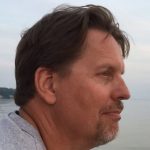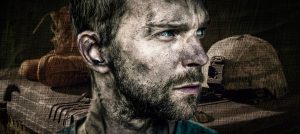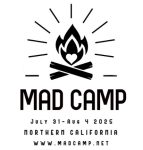by Al Galves, PhD
Schizophrenia is a devastating illness. It is extremely impairing to people, makes it difficult for them to connect with other people and to use their abilities in satisfying ways. It is scary and troubling to family members and loved ones who are typically unable to react to people in effective ways. We haven’t found a good way to treat schizophrenia. The conventional treatment is antipsychotic medicine. Using that treatment people recover at a rate of less than 10 percent.
Following are descriptions of three new treatments for schizophrenia that have higher recovery rates than the conventional treatment.
Soteria Houses
The first Soteria House operated in the San Francisco Bay Area from 1971 to 1983. It was a home-like residence that was designed to treat persons who were experiencing their first psychotic break.
Such persons could go to Soteria House and be safe both physically and psychologically as they went through the psychotic experience. There was no pressure on them to get better, get back on track or stop having those thoughts or hallucinations. Rather, they were told that they could stay there until they recovered and the staff would be with them and help them go through the experience they were having. The treatment was based on relationship and the goal was to help the person go through the experience in a safe place where they were understood, supported and affirmed and could slowly and steadily recover.
Most of the staff were trained peers and other non-professionals who were able to relate well with the residents and help them slowly to make sense out of what was going on, understand what had triggered it and begin to feel less agitated, upset and alienated. Although some of the residents were using psychotropic medication, medication was not used as a primary modality of treatment. The primary modality of treatment was safety and affirming relationship.
The Director of the House was a licensed clinician and the House had a contract with a psychiatrist who provided services as needed.
Residents were involved in taking care of the house and cooking. As they were able, they began to participate in community activities, education, supported employment, recreation, therapy and other forms of community involvement. The typical resident would become stabilized in about six weeks and residents would stay at the house for an average of three months.
A well-done scientific study compared the outcomes of persons who were served at Soteria House with those who were treated in hospitals.1 At one and two-year follow-ups the patients treated at Soteria House were doing significantly better in terms of symptoms, re-hospitalization, social functioning and employment status. And the cost of Soteria House was one-third the cost of hospitalization. Nevertheless, instead of testing other versions of the Soteria approach to treating psychosis, the NIMH shut it down, fired Loren Mosher, the psychiatrist who founded and directed it, and buried the data on it.
Since then, there is a Soteria house in Bern, Switzerland that has been operating since 1978. There was one in Anchorage, Alaska that operated from 2009 to 2016. There are four in Jerusalem and there is one in Burlington, Vermont that has been operation successfully since 2015. All of these Soteria houses report recovery rates that are much higher than recovery rates with conventional treatment.
Soteria Vermont is funded by the state of Vermont and operated by Pathways Vermont. You can learn about Soteria Vermont by going to www.pathwaysvermont.org, and clicking on “Soteria" link. The Soteria page includes a 10-minute video of testimonials by three young people who were treated for psychosis at Soteria Vermont and fully recovered. You can learn about the original Soteria house, Soteria Alaska and Soteria Israel by going to www.rethinkingpsychiatry.org and clicking on the “YouTube Channel” link.
Open Dialogue
The Open Dialogue Approach is a treatment for early psychotic episodes that was developed and is being used by Dr. Jakko Seikkula and his team in Finland. Here is the way it works:
At the first sign of a psychotic break – delusions, hallucinations, disorganized thinking, catatonia – a team of two or three providers meets quickly (within 48 hours) with the patient. They bring together a group of people who are involved in the patient’s life. This might include parents, grandparents, uncles, aunts, siblings, friends, teachers, bosses, boyfriend, girlfriend, spouse, etc. The treatment team facilitates meetings of the group – including the patient – every day or every other day for two or three weeks, as long as it takes to do the work. The treatment team works to create an environment in which people feel free to share their experiences of what has happened or to share their personal experiences that might be helpful. The team creates an environment of openness, tolerance of uncertainty and a focus on understanding. The goal is to develop some understanding of what has happened and what can be done to help. At opportune times, the treatment team stops the discussion and has a discussion among themselves, focusing on important and interesting things that have been said, encouraging more talk about the same and wondering about what has happened and what can be done about it. All treatment decisions are made in the presence of the entire group. The meetings continue until there is some resolution of the situation or it makes sense to stop meeting. Psychotropic medication is not part of the treatment approach. Medication may be used but only in dire circumstances and very judiciously.
Dr. Seikkula and his team have demonstrated a full recovery rate of about 80 percent of patients. The following is a research citation from a peer-reviewed journal: Seikkula, J et al. (2006). Five-year experience of first-episode nonaffective psychosis in open-dialogue approach. Psychotherapy Research 16(2), pp. 214-228.
American clinicians are now being trained in Open Dialogue and it is being used at the Howard Center in Vermont, Advocates, Inc., a community mental health center in western Massachusetts, the Parachute Project in New York City and Emory Medical School and Grady Memorial Hospital in Atlanta.
Other research findings can be found by entering “Open Dialogue” into search engines on the Internet.
Healing Homes
Healing Homes places persons diagnosed with psychotic disorders in homes of ordinary families. The families are provided with the training and supervision they need to provide a safe, affirming environment in which persons can go through the psychotic experience and recover. The patients become integral parts of the family, sometimes as in the case of farm families, working with the family.
Two therapists work as a team to help the person and the family. The family receives supervision from a therapist with whom it meets at least once every 14 days. The patients have a therapist with whom they meet at least once every 14 days and often more frequently than that. The families and the patients have the phone numbers of the therapists and are encouraged to call if they need to.
The family, patient and therapists meet together at least once a month. Meetings based on the Open Dialogue approach are held as needed. If desired by the patient, one of the therapist stays in close contact with the family of origin.
The program provides this service to adolescents and adults. It is run by the Family Care Foundation in Gothenburg, Sweden. The founder and the director of the program is Carina Hakansson.
For more information you can watch a feature-length documentary by Daniel Mackler by going to YouTube and entering “Daniel Mackler Healing Homes.” You can also learn more by searching for “Carina Hakansson Healing Homes" on the web.
Commentary
It is not surprising that the recovery rate with conventional treatment is less than 10 percent. First, patients are told they have a brain disorder. That is a very disempowering and cynical message. What is a person going to do about a brain disorder? The only options are antipsychotic medication and electroshock both of which are fraught with harmful “side effects.” Then you tell the patient they are going to have to take antipsychotic medication for the rest of their lives. That medication reduces the amount and impedes the processing of dopamine in the brain. Dopamine is a neurotransmitter that is associated with vitality, creativity and reward. So you are taking the life out of the person. Antipsychotics are very powerful sedatives that take people down. Sure, they may reduce the salience and intensity of the symptoms. But they do it by dumbing down and tranquilizing the entire organism. And if people take the antipsychotics for more than a year they are at risk of tardive dyskinesia (Parkinson’s-like symptoms), brain shrinkage, cognitive impairment, increased risk of diabetes and early death. Again this is no surprise. Parkinson’s disease is caused by a deficiency of dopamine in the brain. The medicine for Parkinson’s is synthetic dopamine. Psychiatrists will argue that the early death is a result of obesity, smoking and poor medical treatment. But the association between neuroleptic medicine and early death is dose responsive. The more neuroleptics a person takes, the earlier they die.
Soteria houses, Open Dialogue and Healing Homes are based on the understanding that schizophrenia is a move by a wounded psyche towards survival, healing and recovery. Prior to the takeover of psychiatry by neuroscience and biological psychiatry, the conventional wisdom among American psychiatrists was that psychosis was a reaction to what a person had experienced, not a brain disorder. John Weir Perry, a psychologist who worked in California in the 1950’s spent a lot of time interacting with people diagnosed with schizophrenia. He wanted to understand what was going on in their psyches. He came to believe that, as people who have been hurt, abused and rejected approach adulthood, “a change is initiated.” Their psychic energy is attached to a more powerful but imaginary part of their psyches. That enables them to survive in a toxic world with toxic human beings and, if they have an opportunity to develop healthy, nourishing relationships, gives them an opportunity to recover. Many other keen observers of human functioning have similar beliefs:
Bert Karon, author of Psychotherapy of Schizophrenia: Treatment of Choice, believed that people who experience psychosis are terrified of the world and of human beings – usually for good reason.
Jack Rosberg, founder of the Anna Sippi Clinic in Pasadena, CA said “they have split from reality. Their identity crisis leads to a dissolution of their identity. So they go inward to find a place to regroup their defenses so they can survive the breakdown of their system.”
For Dan Fisher, psychiatric survivor, psychiatrist and first Executive Director of the National Empower Center, psychosis is a retreat into monologue as a result of overwhelm from stress or trauma.
Here is Paris Williams, psychiatric survivor, psychologist and author of Rethinking Madness: “Psychosis is an intrapsychic split experienced by someone who is terribly torn between a longing for freedom and autonomy, on one side and a longing for love, belonging and nourishing connection on the other, or; another way of seeing it – torn between a fear of loneliness and isolation, on one side and a fear of being oppressed or ‘losing oneself’ within relationship on the other.”
Frieda Fromm-Reichman, psychiatrist and long-time clinician at Chestnut Lodge, wrote that “psychosis occurs when a person becomes overwhelmed by a dilemma in which they both intensely long for and intensely fear the close, intimate relationship with another.”
For Gregory Bateson, anthropologist and author of Steps to an Ecology of Mind, "psychosis occurs when a child faces a ‘double bind’ in which the authority figures in the family set up conflicting injunctions so that it is impossible for the child to satisfy one without violating the other. This causes such overwhelming distress in the child that s/he is forced into a kind of psychotic reaction as a strategy to tolerate this otherwise intolerable situation.”
R. D. Laing, psychiatrist and author of The Divided Self, saw psychosis as a special strategy that a person invents in order to live in an unlivable situation. It is an attempt to communicate worries and concerns in a situation where that was not possible or not permitted.
Here is Alice Miller, Austrian psychologist and author of For Your Own Good: “You only have to do two things to create a mentally ill person. First, don’t let them be who they are. Second, when they get angry about that, don’t let them be angry.”
As John Weir Perry put it, the first message a person experiencing psychosis receives from the mental health system will make a big difference in their ability to recover. If you are told you have a brain disorder and will have to take a medicine for the rest of your life, you have very limited options, you have little control over your future and you might have little hope for recovery. If you are told you are going through a hard time, what you are experiencing has some meaning in your life and you will be helped to go through the experience, you will have a greater sense of agency and greater hope for recovery.
1 Bola J & Mosher L. (2003). Treatment of acute psychosis without neuroleptics: Two-year outcomes from the Soteria project. The Journal of Nervous and Mental Disease. 191(4). Pp. 219 - 229
Dr. Galves is a clinical psychologist in New Mexico and Colorado. He has worked as a psychotherapist in community mental health centers, in health clinics, and as a school psychologist in public schools. He is a board member of MindFreedom International and the author of Harness Your Dark Side: Mastering Jealousy, Rage, Frustration and Other Negative Emotions. Dr. Galves was the ISEPP Executive Director from 2011 to 2013.
 Soteria Las Cruces is a newly-funded start-up program in Las Cruces, New Mexico. Soteria is a residential treatment setting for adults, 18 years of age and older, experiencing intense mental health challenges (i.e. psychosis), especially individuals in the early stages of crisis who may not benefit from traditional hospitalization. Soteria is a home-like setting where people receive support and affirmation while experiencing a psychotic episode. The Soteria approach is based on the concept of ’being with’ the individual rather than ’doing to’ them. The primary mode of treatment is one of relationships and psychosocial approaches and supports.
Soteria Las Cruces is a newly-funded start-up program in Las Cruces, New Mexico. Soteria is a residential treatment setting for adults, 18 years of age and older, experiencing intense mental health challenges (i.e. psychosis), especially individuals in the early stages of crisis who may not benefit from traditional hospitalization. Soteria is a home-like setting where people receive support and affirmation while experiencing a psychotic episode. The Soteria approach is based on the concept of ’being with’ the individual rather than ’doing to’ them. The primary mode of treatment is one of relationships and psychosocial approaches and supports.
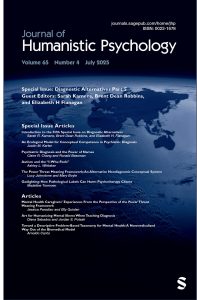 Check out the
Check out the 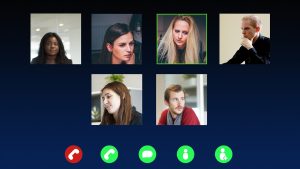 Don't miss out on our ISEPP webinar, titled
Don't miss out on our ISEPP webinar, titled 